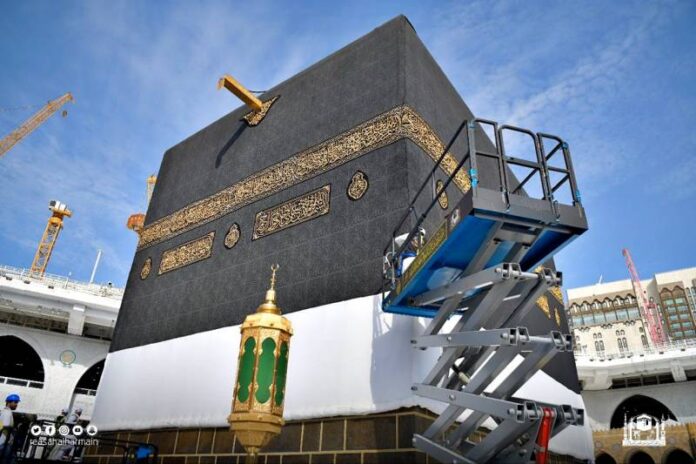Makkah witnessed the time-honored tradition of replacing the cloth of the Holy Kaaba as the General Presidency for the Affairs of the Grand Mosque and the Prophet Mosque performed the annual ritual. Videos circulating online showcase the meticulous process of taking down the old Kiswa and replacing it with a new one.
Meticulous Process: Unveiling the New Kiswa for the Holy Kaaba
As the Islamic year 1445 begins, officials at the Grand Mosque oversaw the ceremonious changing of the Kiswa. This intricate process involves unfastening the golden rings that secure the Kiswa to the Kaaba, draping Islam’s most revered site with a fresh cover, and carefully removing the previous one.
Over a hundred skilled artisans dedicated their craftsmanship to produce the 56 segments of the Kiswa, which required 120 kilograms of gold thread and 100 kilograms of silver. The painstaking effort ensures that the Kaaba is adorned with a splendid garment every year.
A fascinating tradition accompanies the replacement of the Kiswa. The previous year’s cloth is meticulously cut into smaller pieces and then distributed among specific individuals and organizations worldwide. This practice has endured throughout history, furthering the significance of the Kaaba’s cloth as a symbol of devotion and reverence.
Symbol of Devotion: Historical Significance of the Holy Kaaba’s Kiswa
Historical accounts trace the origins of the Kiswa back to the reign of the fourth-century Yemeni King Tubba. It is believed that King Tubba instructed the leaders of the Jurhum tribe to maintain the Kaaba’s purification, fashioning a door and key for it. Ever since, the Kiswa has become an iconic feature of the Holy Kaaba, embodying its sacredness and historical legacy.


 Le moment où la
Le moment où la  a été changée par la nouvelle comme le veut la tradition chaque année la nuit du 1er
a été changée par la nouvelle comme le veut la tradition chaque année la nuit du 1er 




